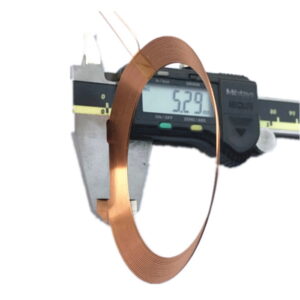With the increasing popularity of various electronic devices, the demand for charging these devices has also grown. Wireless charging coil technology has gradually become a new trend in electronic device charging due to its convenience. Wireless charging coils require electronic devices to be equipped with wireless charging receiver coils to receive electromagnetic waves generated by the wireless charging transmitter coil on the wireless charger for charging.

Wireless charging coil modules consist of a shielding plate and a copper coil, with the shielding plate accounting for nearly 40% of the cost of the wireless charging module. The purpose of the shielding plate is to prevent electromagnetic interference from affecting the mobile communication chip, while the wireless charging coil is responsible for generating or receiving power energy. Both play important roles in the wireless charging module, and their quality directly affects the efficiency of wireless charging.
Wireless charging coils are suitable for devices such as smartphones, Bluetooth earphones, electric toothbrushes, electric toys, electric cars, and access cards. Wireless charging coils can be divided into low-power and high-power wireless charging modes. The products adopt soft magnetic composite materials, and the magnetic sheets are CNC engraved and die-cast. The common central column and barrier wall design can effectively reduce signal interference, achieving faster energy conversion, higher charging efficiency, and a more concentrated magnetic field.
Wanlianda Electronic Co., Ltd. in Huizhou, China, uses multi-strand twisted wires for their wireless charging coils, which have better heat dissipation and are less prone to burning. When using wireless charging coils, please pay attention to the following:
(1) Electromagnetic induction is commonly used for low-power wireless charging, such as charging smartphones, while inductive charging is used for wireless charging of electric vehicles.

(2) High-power wireless charging often uses resonant power supply devices (chargers) to transfer energy to the power-consuming devices, which then utilize the received energy to charge their own batteries for operation.
(3) Since the charger and power-consuming device transmit energy through a magnetic field, they do not require wire connections, allowing both the charger and the power-consuming device to be exposed without any conductive contacts.